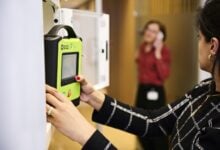How play can help children cope with disruption and uncertainty
One of the best ways to help children build resilience might also be one of the most accessible.

Given the increased stress being put on families in recent times, and the rise in incidence of mental health issues among young people, building resilience is more important than ever.
Yet, there is a paucity of resources available to support young people and their families. Existing helplines and support avenues are being stretched thin due to increased demand, and it can be hard to know where to turn. Yet, one of the best ways to protect the wellbeing of tamariki and whānau may be one of the most accessible: play.
Read the Term 1 edition of School News HERE.
According to the LEGO Foundation’s 2020 report, “Learning to cope through play,” play can function as a support for children undergoing stress.
“Research shows a link between play and children’s ability to understand and cope with the demands of their environment, respond to challenges with creative problem solving, and manage their anxiety in stressful situations. [Play] provides them with ways to channel negative emotions and practice strategies to overcome stress.”
This effect is shown even in children who have experienced prolonged and severe hardships such as poverty and abuse.
Another report from the LEGO Foundation, “Play Well”, shows that play also has protective benefits for adults, and therefore the whānau as a whole. When families engaged in quality play together, they were more likely to describe themselves as happy.
Additionally, play is fun. Although that might sound obvious, according to Dr Sarah Aiono, an accredited PLD provider for MoE, experiencing joy can “enable many higher cognitive functions, such as enhanced attention, working memory, mental flexibility and improved stress regulation.
“By experiencing joy, our kids are increasing their ability to adapt to and learn from new situations… when children play together socially, they develop the skills of adaptability and resilience in ways that simply cannot be taught outside of the context of play.”
Crucially, the benefits of play don’t have to be limited by resource – except for finding time to prioritise quality play. The Child and Nature Network, citing a report from the American Academy of Pediatrics, says “nature play” is one of the best ways to build resilience.1
“Nature play” is defined as “outdoor free play in natural areas that is imaginative, constructive, sensory-rich and cooperative”. Places that facilitate nature play include parks, and “loose parts” playgrounds. It could also include a backyard, beaches, forests, or any public access site. These allow children to climb, dig, collect, play or hide; in doing so, they interact with nature.
Although the challenges of the last few years, and the challenges yet to come, have been and continue to be significant, having a playful mindset could help to build resilience and strong bonds between tamariki and whānau, so families and children can continue to weather adversity together.
1Beery, Thomas. 2020. Exploring Access to Nature Play in Urban Parks: Resilience, Sustainability and Early Childhood. Sustainability 12: 4894. DOI:10.3390/su12124894.









